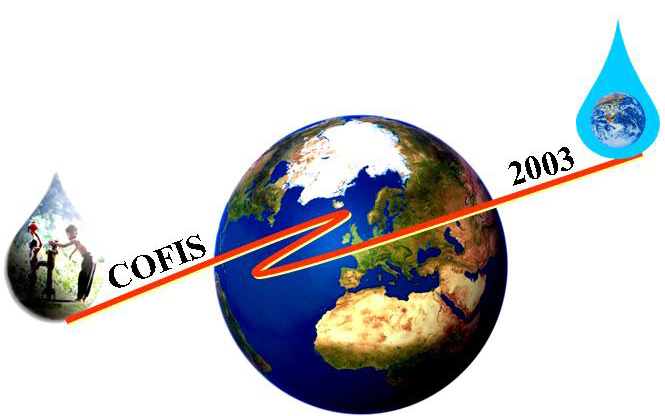|
Introduction
Objectives
Themes
Venue
Organizers
Abstracts/Papers
Registration
Fellowships
Training
Accommodation
Important Information
Contact
Home
|
Namaste
and welcome to the wonderful land of India !!!.
|
History
India, the land of
diverse cultures and religions, a multitude of languages, traditions
and festivals, flora and fauna, is a country that every Indian is
proud of. The original inhabitants of India were Dravidians, a dark-skinned
people whose descendents live in southern India. Fair-skinned Aryans
invaded from the north about 1500 BC, which marked the beginning of
the Indic Civilization. It was between 2500-1500 BC that the Indus
Civilization flourished in India. The culture then, was known as the
Vedic culture. The ancient and varied literature, 'The Vedas', is
not to be found in any other part of the world.
A series of independent states grew
up in India. From time to time they were united in empires, notably
the Maurya empire [321-184 BC]; the Gupta dynasty [AD 320-535]; and
the Mogul empire [1526-1857], established by Moslem invaders. Europeans
began trading in India in 1498. From 1757 to 1858 the British East
India Company was the main power in India. From then until 1947 the
British government ruled most of India as an empire. Until then, British
India included the lands that are now Pakistan and Bangladesh. Indian
Independence was as a result of collective efforts of great freedom
fighters and political leaders.
Geography
India, the land of
diverse cultures and religions, a multitude of languages, traditions
and festivals, flora and fauna, is a country that every Indian is
proud of.
India, also called Bharat, is the largest
democracy in the world. India is the world's second biggest country
in terms of population, and the seventh largest in area. India is
a peninsular country, located in South East Asia. It has vast geographical
diversity ranging from mountains to lakes and from forests to rivers.
The Location:
India is located in the northern
hemisphere. The Himalayan ranges crown the northern boundary of India.
The Bay of Bengal lies to the east, the Arabian sea is to the west
and the Indian Ocean is to the south of the country. To the north
west of India is Pakistan, while Afganistan, China, Nepal, Bhutan
are in the north, and Myanmar is in the east. Bangla- desh, Nepal
and Bhutan are surrounded on three sides by the Indian territory and
Sri Lanka is separated by the Palk strait in the south.
The Land:
In the north are the Himalayas and
their foothills. Parallel with the Himalayas are the northern plains,
which extend from east to west. These plains were originally a marine
gulf between India and the mainland of Asia. This gulf has been filled
by deposits brought down by rivers, especially the Ganges and the
Bhramaputra. Most of southern India is formed by the Deccan, a vast
plateau sloping toward the east. At its western edge lie the Western
Ghats with a narrow coastal plain while to the east lie the Eastern
Ghats, a lower range of hills with a broader coastal plain. The Vindhyas
and Ajanta hills form the northern boundary of the Deccan. India's
tallest mountain is the K2 in the Karakoram range, 8611m. The Ganges
is not only India's most important waterway, but is also sacred to
the Hindus. At present the Republic of India comprises 25 states and
7 Union Territories.
The Climate:
The climate of India is of monsoon
type. The northeast monsoon brings dry weather from March to September;
the southwest monsoon brings the wet season from October to December
in Chennai.
Wildlife:
The wildlife, landscape and flora of
India ranges from the frozen peaks of the remote Karakoram range in
Ladakh to the luxuriant 'shola' rain forests of the south-western
ghats; from the scorched deserts in the west to the great jungles
and swamps of Assam and Manipur.
India is also the last bastion
of the Asiatic Lion in Gujarat's Gir forests, the decidous forests
and jungles of central India and the north- east - wild kingdom of
the majestic Tiger, Swamp Deer, Golden Langur and Hoolock Gibbon,
the One-horned Rhinoceros and herds of Elephant and Buffalo. The wildlife
of India, like its vegetation, emphasizes by its diversity of species
the widely differing habitats and climatic zones which are available.
There are about 500 different mammals, more than 2000 species of birds
and several hundred reptiles and amphibians.
The magnificent Tiger is the national
animal of India. In 1940 there were perhaps 40000 tigers in India.
Excessive hunting and loss of forest habitat had caused this catastrophic
decline, and it was clear that unless an enormous effort could be
made to save them, tigers would be extinct within 20 years. The launch
of 'Project Tiger' by the Indian Government resulted in a complete
ban on hunting and the creation of 15 fully protected Tiger reserves.
Since then, the Tiger population has more than doubled and the species
is saved for posterity
The Gir Lions are the Asiatic, forest-loving
relatives of the African Lion. Their range once extended from Greece
to central India, but those in the Gir are the last survivors - of
which India is rightly proud. The Gir National Park is one of the
best managed in the country.
The Indian Elephant is a familiar sight
as a domesticated animal throughout Southeast Asia. It is slightly
smaller than its African counterpart and easily distinguished by its
smaller ears and rounded, rather than hollow, back. Although there
are still fairly large numbers left in India, the population is steadily
declining because of the constant reduction of undisturbed forests
on which they depend.
After the Elephant, the One-horned Rhinoceros
is the largest animal in India. The biggest surviving population is
in the Kaziranga National Park in Assam. The total number surviving
is about 1200 in India. Poachers everywhere kill rhinos for the high
sums fetched by their horns, which are believed to have magical or
medicinal properties.
|
